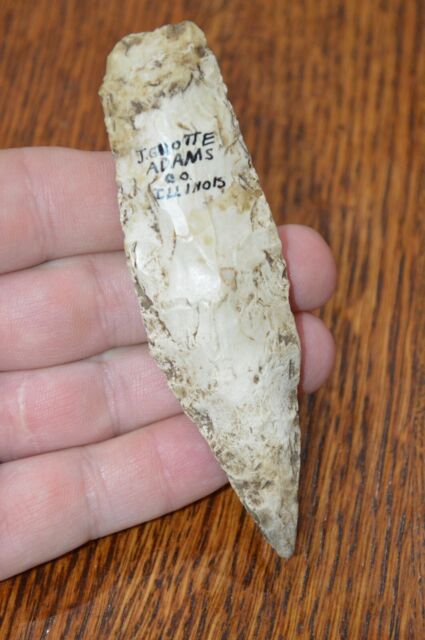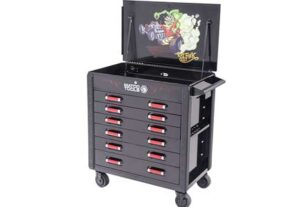Are you looking for a comprehensive guide on Indian stone tools and their prices? If so, you have come to the right place. In this article, we will explore everything you need to know about Indian stone tools, including their history, types, and factors that affect their price.
Indian stone tools are among the most fascinating artifacts in the world. They offer a glimpse into the lives of our ancestors and their ingenuity in crafting tools from natural materials such as stone. Today, these artifacts are highly valued by collectors and history enthusiasts alike.
In this guide, we will look at how to identify authentic Indian stone tools and avoid buying fake or forged pieces. We will also discuss the various types of Indian stone tools available and factors that influence their prices. So, let’s get started!
What Are Indian Stone Tools?
Indian stone tools refer to a vast range of prehistoric artifacts that were used by Native Americans throughout North America. These artifacts were crafted from various types of stones such as flint, chert, obsidian, quartzite, and more.
Indian stone tools have been found at various archaeological sites across North America, dating back thousands of years. They include arrowheads, spear points, knives, scrapers, drills, axes, hammers, and more.
These tools were used for a variety of purposes such as hunting, fishing, gathering food, making clothing and shelter, and other daily activities. Indians used these tools until the introduction of metal tools by Europeans in the 16th century.
Types of Indian Stone Tools
Indian stone tools can be classified into different categories based on their shape and function. Here are some of the most common types:
1. Arrowheads – These are small triangular-shaped stones with sharp edges that were used as tips for arrows.
2. Spear points – Similar to arrowheads but larger in size, spear points were used as tips for spears.
3. Knives – These are sharp-edged stones that were used for cutting and slicing food, leather, and other materials.
4. Scrapers – These are flat stones with a sharp edge that were used for scraping hides to remove hair or flesh.
5. Drills – These are pointed stones that were used for drilling holes in wood or bone.
6. Axes – These are heavy stones with a sharp edge that were used for chopping wood or breaking bones.
Factors That Affect Indian Stone Tool Prices
The value of Indian stone tools varies based on several factors such as rarity, quality, condition, and provenance. Here is a closer look at these factors:
1. Rarity – The rarer the artifact, the more valuable it is. Some types of Indian stone tools are more difficult to find than others, making them highly sought after by collectors.
2. Quality – The quality of the craftsmanship also affects the price of Indian stone tools. Pieces that show exceptional skill and attention to detail will fetch higher prices than those with crude workmanship.
3. Condition – The condition of the artifact is also an important factor in determining its value. Pieces that are well-preserved and free from damage will sell for more than those with chips, cracks, or other flaws.
4. Provenance – The history and origin of the artifact can also influence its value. Pieces with documented ownership history or tied to significant events or people in history will fetch higher prices than anonymous pieces.
How to Identify Authentic Indian Stone Tools
With the popularity of Indian stone tools among collectors, there is also a market for fake and forged pieces. Here are some tips to help you identify authentic artifacts:
1. Look for signs of wear – Authentic Indian stone tools will show signs of wear from use such as nicks or scratches on the edges.
2. Check the material – Genuine Indian stone tools will be made from natural stones and not synthetic materials.
3. Look for patina – Authentic artifacts will have a natural patina or discoloration caused by age and exposure to the environment.
4. Check the craftsmanship – Genuine Indian stone tools will show signs of skilled craftsmanship, such as consistent shape and symmetry.
5. Research the seller – Buy from reputable dealers with a proven track record in selling authentic Indian stone tools.
Where to Buy Indian Stone Tools
There are several places where you can buy Indian stone tools, including:
1. Online marketplaces – Websites like eBay and Amazon offer a wide selection of Indian stone tools from various sellers.
2. Auction houses – Some auction houses specialize in selling Native American artifacts, including Indian stone tools.
3. Antique stores – Many antique stores carry Indian stone tools as part of their inventory.
4. Private collectors – You can also find Indian stone tools through private collectors who are willing to sell or trade their pieces.
Conclusion
Indian stone tools are fascinating artifacts that offer a glimpse into the lives of our ancestors and their ingenuity in crafting tools from natural materials. They are highly valued by collectors and history enthusiasts alike, making them an excellent investment opportunity.
In this guide, we have covered everything you need to know about Indian stone tools, including their types, history, factors that affect their price, and how to identify authentic pieces. We hope this information has been helpful in your search for the perfect Indian stone tool for your collection.
References:
https://en.wikipedia.org/wiki/Indian_stone_tool
https://www.artifactsguide.com/blog/indian-artifacts-price-guide
https://www.antiquesandthearts.com/native-american-artifacts-and-the-law/
http://www.arrowheads.com/index.php/indian-artifacts-value.html




